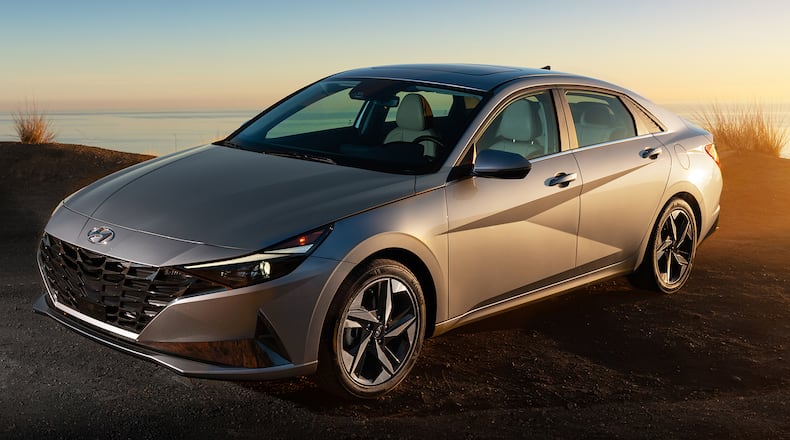For this model year, the Elantra is totally redesigned and it shows. Everything about the Elantra looks fresh and new. The exterior has an updated, distinctive appearance with a wide-gilled grille on the front end to the sleek markings on the side panels. The back has a completed look that even includes a small spoiler. The rear taillights have an arrowhead-like shape that connect to each other.
For me, distinctive lighting really adds to the appeal and appearance of any vehicle and the Elantra’s new look lights are outstanding.
The one area that is a letdown is in the powertrain. The base engine, which my tester came equipped with, is a puny 2.0-liter four-cylinder engine with only 147 horsepower and 132 lb./ft. of torque. There are two other engine options that both come with turbos and make more horsepower. Those would be my choice to make the Elantra truly something special.
When the jury votes for NACOY they get every trim and every engine option, and I’m sure the turbocharged four cylinders suited their fancy much more than the base engine did. The continuously variable transmission (CVT) didn’t improve the performance either as the little quirks that naturally exist with CVTs were on full display with this engine as well like withheld shifts, over shifting and general quirky shifting habits.
As underwhelming as the base engine was, the interior far exceeded expectations and showed why it won NACOY. For a compact, economy car, the Elantra had an incredibly luxurious, high-quality interior plus excellent legroom. Two adults could comfortably sit in the back seat and have legroom to spare. A third passenger could fit back there, but it would get a little tight on shoulder room. But otherwise, the interior space is comfortable and useful, including a 14.2-cubic foot trunk, which is great for the compact car segment.
My tester had two packages that really piled on the niceties – the convenience package and the premium package. Included in these packages is a full 10-inch instrument cluster, leather-wrapped steering wheel and shifter, heated front seats and 60/40 split rear folding seats. Red trim around the front seats added a youthful, sporty vibe to the Elantra which didn’t feel like the economy-focused Elantra of the past.
There are four trims including SE, SEL, N-Line and Premium. My tester was the SEL with a base price of $20,900. The Convenience Package adds $950 to the sticker while the Premium Package adds another $2,100. As tested, the final MSRP of my tester was $25,110.
Fuel economy for the front-wheel drive Elantra is 31 mpg/city and 41 mpg/highway. I averaged nearly 35 mpg in a week’s worth of suburban driving. Any time I can achieve north of 30 mpg is a win.
Winning national accolades may not mean much to the regular consumer, but in this case it should. North American Car of the Year is prestigious, and from what I experienced it was warranted with the 2021 Hyundai Elantra. But maybe get the turbocharged N-Line instead and be really blown away.
Jimmy Dinsmore is a freelance automotive journalist. Email him at jimmydinsmore73@gmail.com. Follow him on Twitter @driversside
2021 Hyundai Elantra SEL
- Price/As tested price................................................ $20,900/$25,110
- Mileage.......................................... 31 mpg/city; 41 mpg/hwy
- Engine............................................. 2.0-liter four-cylinder
- Horsepower................................. 147 hp/x132 lbs./ft.
- Transmission................................. CVT
- Drive wheels................ Front-wheel drive
- Final assembly point................ Montgomery, Alabama
About the Author
